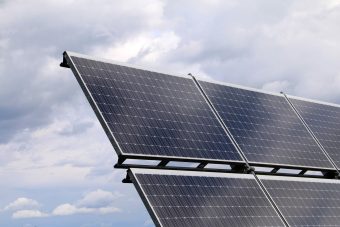
Serbia is facing serious challenges when it comes to energy efficiency. With energy consumption approximately 3.5 times higher than the European average, it is clear that there is significant room for improvement. According to Eurostat data from 2022, Serbia’s energy intensity is 1.8 times higher than the European Union’s, indicating a need for radical changes in energy usage. Over the past decade, Serbia has made significant efforts to increase energy efficiency through various action plans and regulations, but achieving further savings and reducing energy consumption remain key priorities on the agenda. We spoke with Antonela Solujić from the Chamber of Commerce and Industry of Serbia about energy efficiency, energy transition, and the rational use of energy.
Q: Serbia consumes about 3.5 times more energy than the European average. How can this be changed to save energy?
A: Serbia has an energy intensity about 3.5 times higher than the EU average, meaning that three and a half times more energy is consumed in Serbia to produce one unit of gross national income than in the European Union. If this parameter is adjusted for purchasing power parity, then according to Eurostat data, in 2022, it was about 1.8 times higher in Serbia than in the EU. This highlights the need for Serbia to focus heavily on improving energy efficiency, as implementing energy efficiency measures can enable further economic growth while reducing energy consumption and increasing competitiveness, as well as enhancing the quality of life across all sectors. This is further evidenced by the fact that, since 2010, Eurostat data shows a significant reduction in energy intensity adjusted for purchasing power parity—over 30 percent. During this period, Serbia began planning and implementing energy efficiency measures through energy efficiency action plans (APEE), establishing the first legal framework and incentives for energy efficiency through the Law on Efficient Use of Energy. According to the 4th Energy Efficiency Action Plan, implementing the three APEE plans from 2010 to 2018 resulted in final energy savings of around 0.661 Mtoe, or about 7.7 TWh. It’s important to understand that when we talk about energy efficiency measures, we are not only referring to technical measures but also to raising awareness about energy efficiency and its benefits. Everyone must start paying attention to their energy consumption. Additionally, it is essential to provide appropriate incentives.
IN FOCUS:
- Energy Transition In Serbia – Challenges and Potential
- New Chargers For Improving E-Mobility
- How Can Residental Communities Take Advantage of the Energy Transition
Q: How important is energy efficiency in the energy transition process?
A: Energy efficiency (EE) is undoubtedly one of the key policies in the fight against climate change. It contributes to reduced import dependence, increased economic competitiveness, higher living standards, reduced negative impacts of the energy sector on the environment, regional development promotion, and more. The EU recognized energy efficiency as a key policy contributing to cost-effective GHG emission reductions with numerous additional benefits through the implementation of its first programs in the 1990s. In Serbia, the Energy Development Strategy (covering the period until 2025) recognizes energy efficiency as a ‘new energy source.’ Since 2010, through the Energy Community Treaty, it has set and implemented activities to meet goals in this area, following EU policies. In 2018, as part of the Clean Energy for All Europeans package, the EU adopted the Regulation on the Governance of the Energy Union and Climate Action (RGOV), which introduced the obligation to develop Integrated National Energy and Climate Plans (INECP). For the first time in synergy, these plans set goals for reducing GHG emissions, increasing energy efficiency, and promoting renewable energy sources, considering that some measures simultaneously impact achieving multiple objectives. The significance of EE in the context of energy transition and combating climate change in Serbia is reflected in the fact that around 20 billion euros, or about 67 percent of all investments planned within the Integrated National Energy and Climate Plan (INECP) by 2030 (adopted by the Government of Serbia on July 25, 2024), will be directed towards energy efficiency measures. Approximately 20 percent of this funding (5.8 billion euros) will focus on measures impacting decarbonization. The government plans to support the implementation of these investments through various incentive mechanisms, covering about 40 percent of the investment.
Q: What are the best energy efficiency measures in terms of practicality and effectiveness?

A: Based on the results of the EE measures implemented in the four APEE plans, it has been estimated that regulatory measures contributed the most to savings. These include, first and foremost, the introduction of minimum EE requirements in specific sectors, such as building regulations (implemented since 2012), regulations on limiting CO2 emissions for new passenger and light-duty vehicles, and regulations on energy labeling of products, as well as the establishment of the Energy Management System (SEM). Energy consumption sectors are highly diverse, making it difficult to compare the cost-effectiveness of specific measures across these sectors. However, according to the literature, tracking and rational management of energy consumption, combined with regular maintenance of technical systems, can reduce energy consumption by up to 10 percent, with little or no cost. So far, within SEM, the most significant savings in the production sector have been achieved through monitoring consumption, analyzing measured data, and improving energy management procedures. These measures tend to yield better results when combined with awareness-raising initiatives for employees and the general public. Among the most cost-effective measures are replacing lighting fixtures or light sources with more efficient ones. According to the results of energy audits in 10 small and medium-sized enterprises (conducted in 2021 as part of the project Technical Assistance to the Ministry in Charge for Energy and Relevant Public Entities for Implementation of New Energy Law, National Action Plan for Energy Efficiency, and the Renewable Energy Directive), measures in the industrial sector pay off relatively quickly. In households, energy-saving measures can be implemented, such as managing energy consumption via thermostatic valves, appropriate ventilation methods, adjusting water heater temperatures, refrigerator cooling temperatures, room cooling temperatures, etc. Replacing light sources with more efficient ones is also a measure that pays off relatively quickly in households. However, investment measures in energy efficiency for buildings generally require more serious funding.
Interview by Milica Radičević
Read the whole interview in the new issue of the Energy portal Magazine ENERGY TRANSITION



